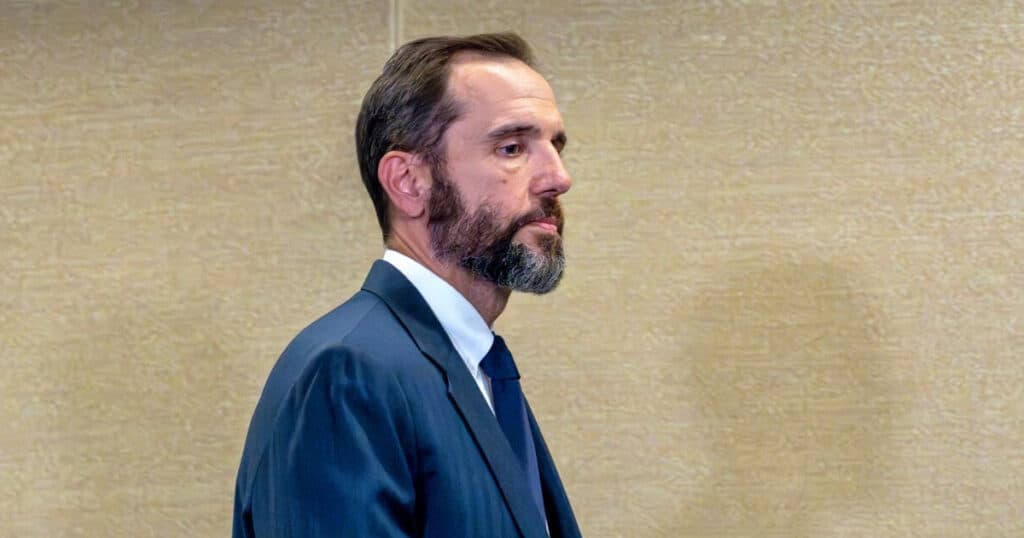
Thanks To Biden’s “Inflation Reduction” Bill, The Carbon Dioxide You Exhale Is Now Apparently A Pollutant
Remember back in June when the Supreme Court decided the West Virginia v. EPA case and greatly hamstrung the administrative state’s efforts to poison the utility industry?
One of the important points made in the majority opinion was that the EPA’s efforts to “fight climate change” by imposing carbon emissions restrictions on power plants was that carbon dioxide wasn’t listed as a pollutant in the federal laws used as enabling legislation for the EPA to act. This was seen as a big deal, in that without congressional authorization for the use of CO2 restrictions, the EPA was therefore now banned from imposing policy through regulation that would have greatly hampered our electric grid.
Well, the good times were fun, but they didn’t last. As a quite informative but thoroughly depressing article at Industrial Info Resources points out, the “Inflation Reduction Act” has taken away that barrier and empowered the EPA to go hog-wild in its wrecking of the electric utility industry.
Your light bill is going to blow up like a balloon.
The recently enacted Inflation Reduction Act of 2022 contains an estimated $369 billion in federal funding to combat climate change, but a one-sentence definition inserted in multiple places in the 273-page law may upend the electric power industry as much as new federal support for renewable energy.
The bill, signed into law by President Joe Biden on August 16, for the first time defined carbon dioxide (CO2) as an air pollutant that can be regulated under the federal Clean Air Act. This definition directly addressed, and potentially trumped, a recent momentous U.S. Supreme Court ruling, West Virginia v. EPA, issued June 30.
For more on the Supreme Court ruling, see July 1, 2022, article – Supreme Court Kicks Clean Air Case Back to EPA. In that 6-3 ruling, the court held that the U.S. Environmental Protection Agency (EPA) (Washington, D.C.) lacked the specific authority to decarbonize the electricity business without explicit authorization from the Congress. In conflicts over regulation, the only way a Supreme Court ruling can be overcome is if Congress passes legislation specifically addressing what the court faulted.
Now the EPA has that authority. In a story first reported by The New York Times, several titles of the bill included this definition: “The term ‘greenhouse gas’ means the air pollutants carbon dioxide, hydrofluorocarbons, methane, nitrous oxide, perfluorocarbons and sulfur hexafluoride.”
The new law’s definition likely will accelerate the reduced use of coal in electric generation, while increasing the business prospects of companies trying to launch or expand their low-carbon businesses. But the new law also may affect the future use of natural gas in electric generation. A lot depends on how the EPA writes new clean air rules.
Republicans apparently fought tooth and nail against defining CO2 as an air pollutant under the Clean Air Act, but ultimately their opposition was overcome on party-line votes in the U.S. Senate and House of Representatives. The Democratic-backed bill did not receive one Republican vote in either chamber.
The federal effort to regulate CO2 emissions from power plants has spanned nearly 20 years and four presidents. Neither the Obama nor Trump rules ever went into effect.
When drafted in 1970, and significantly amended in the late 1980s, the Clean Air Act did not define CO2 as a pollutant to be regulated. But over the years, the EPA’s ability to regulate CO2 emissions from power plants hinged on a 2007 Supreme Court ruling, Massachusetts v. EPA, which held that the EPA was obligated to regulate CO2 emissions if it determined they constituted a danger to public health.
In 2009, the EPA issued its “endangerment finding.” The years since have featured dueling Democratic and Republican efforts to regulate CO2 emissions from power plants. In 2015, the Obama administration finalized its Clean Air Plan, but it was stayed the next year in an unusual move by the Supreme Court. The Trump administration then drafted its own plan to control CO2 emissions, the American Clean Energy Act, but that, too, was blocked by a federal court.
The Times article quoted Senator Tom Carper (D-Del.) who led the charge to revise the law: “The language, we think, makes pretty clear that greenhouse gases are pollutants under the Clean Air Act.” Under the newly enacted law, he continued, it was clear that Congress was providing explicit authority to federal agencies to regulate and reduce CO2 emissions and other heat-trapping gases emitted by power plant smokestacks, vehicle tailpipes, and oil and gas production.
Speaking on Fox News Business before the Senate voted on the Inflation Reduction Act, Senator Ted Cruz (R-Texas) criticized the legislation: “It’s buried in there. The Democrats are trying to overturn the Supreme Court’s West Virginia vs. EPA victory.”
After the president signed the Inflation Reduction Act into law, the White House signaled that further action to limit CO2 emissions would be forthcoming by federal agencies. Following the defeat of the Trump administration’s American Clean Energy plan by a federal court on the last day of his administration, the Biden EPA has been working on a new draft rulemaking limiting CO2 emissions from power pants. The EPA asked the Supreme Court not to take the West Virginia case, as it was preparing a successor regulation. The court rejected the agency’s request.
The Times article said conservative organizations that had challenged the EPA in the past over CO2 regulation promised a continuation of litigation. But legal experts cited in the news report predicted those future challenges would be harder to win, now that Congress defined CO2 as an air pollutant that could be regulated under the Clean Air Act.
The idea that a trace gas in the atmosphere that you create by breathing could be a “pollutant,” when said trace gas is literally plant food, is one of the dumbest and most disqualifying ever to deface our policymaking process. After all, water vapor is also a greenhouse gas, and in fact is far more responsible for trapping heat in the atmosphere than CO2 is, so why isn’t it listed as a pollutant?
It’s utter idiocy. But that’s who Democrats are today.
Next up will be individual states flat-out nullifying EPA regulations when it comes to their power grids. It’ll have to happen if we’re to avoid widespread brownouts and blackouts across the country.
Simply put, there is no way that “renewables” can produce the quantity of electric power it takes to run our grid. Fossil fuels, and of course nuclear power, which the environmental crowd also loathes, are the only things which can.
Disaster is coming thanks to Democrat policy. But revival will come later after the eco-fascist clownshow has run its course over the next few years.



